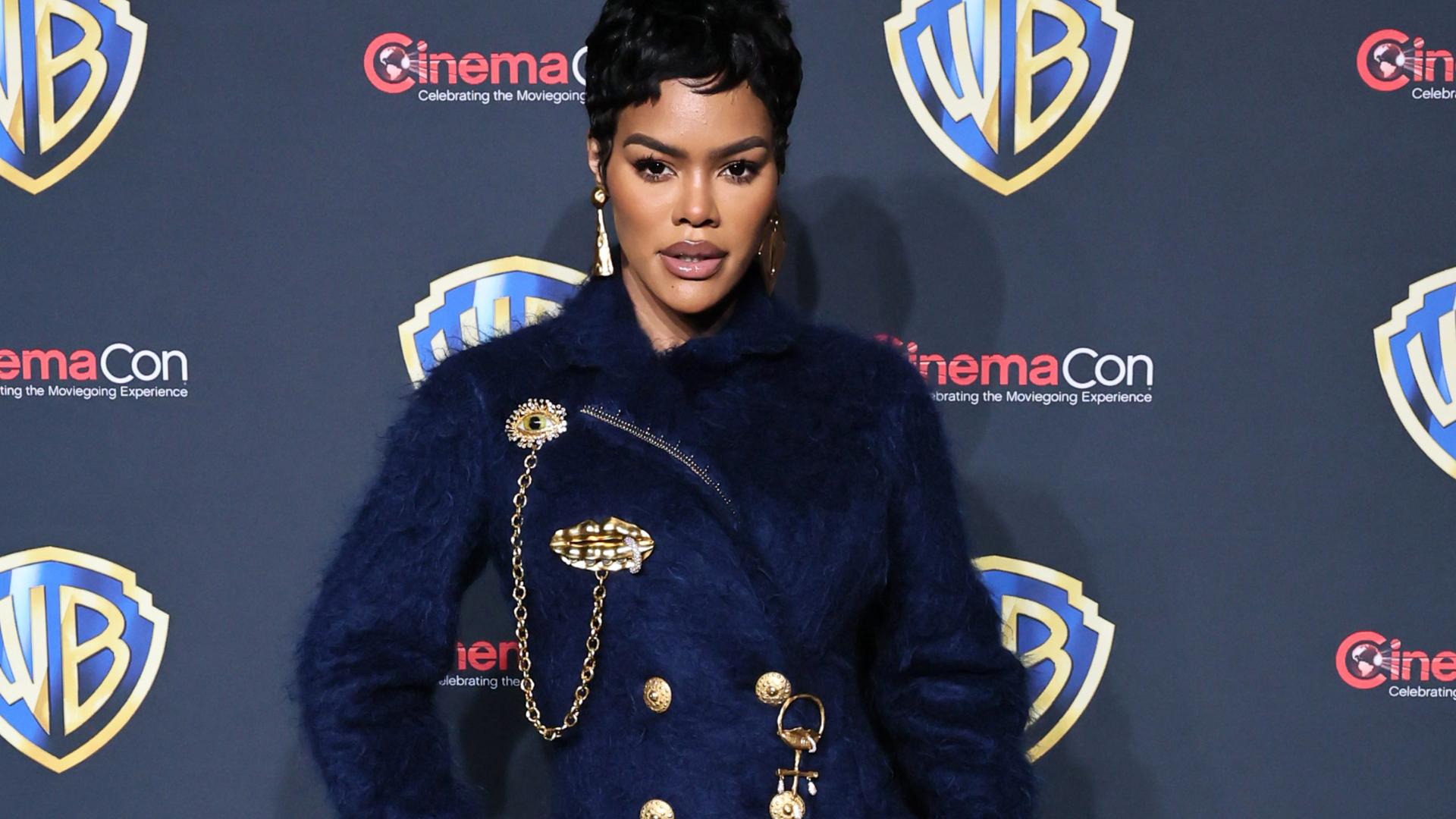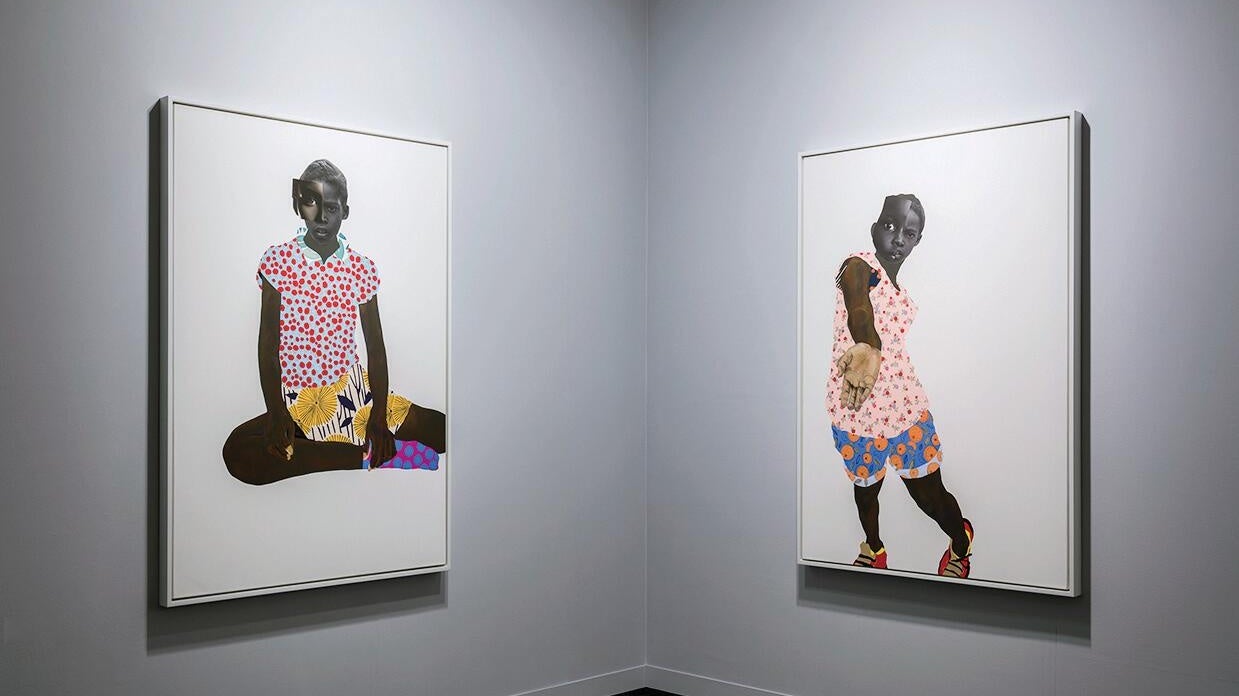
“For me, beauty isn’t just this idea of a beautiful woman with blue eyes and blonde hair,” explains visual artist Deborah Roberts, speaking from her home in Austin, Texas. “It is the iconic girl, the grandma, like Ida B. Wells, strong women who probably are not considered beautiful by Western standards, but who are beautiful in their own way, in the way they protect and take care.”
Mixed-media artist Roberts, 59, combines intricate and layered collages and paintings to redefine the ideal of Black beauty and promote pride in our Blackness through her work. She specifically focuses on children as a way to shield them from the structural racism, sexualized stereotypes, random violence and social injustice that must be confronted daily in Black America.
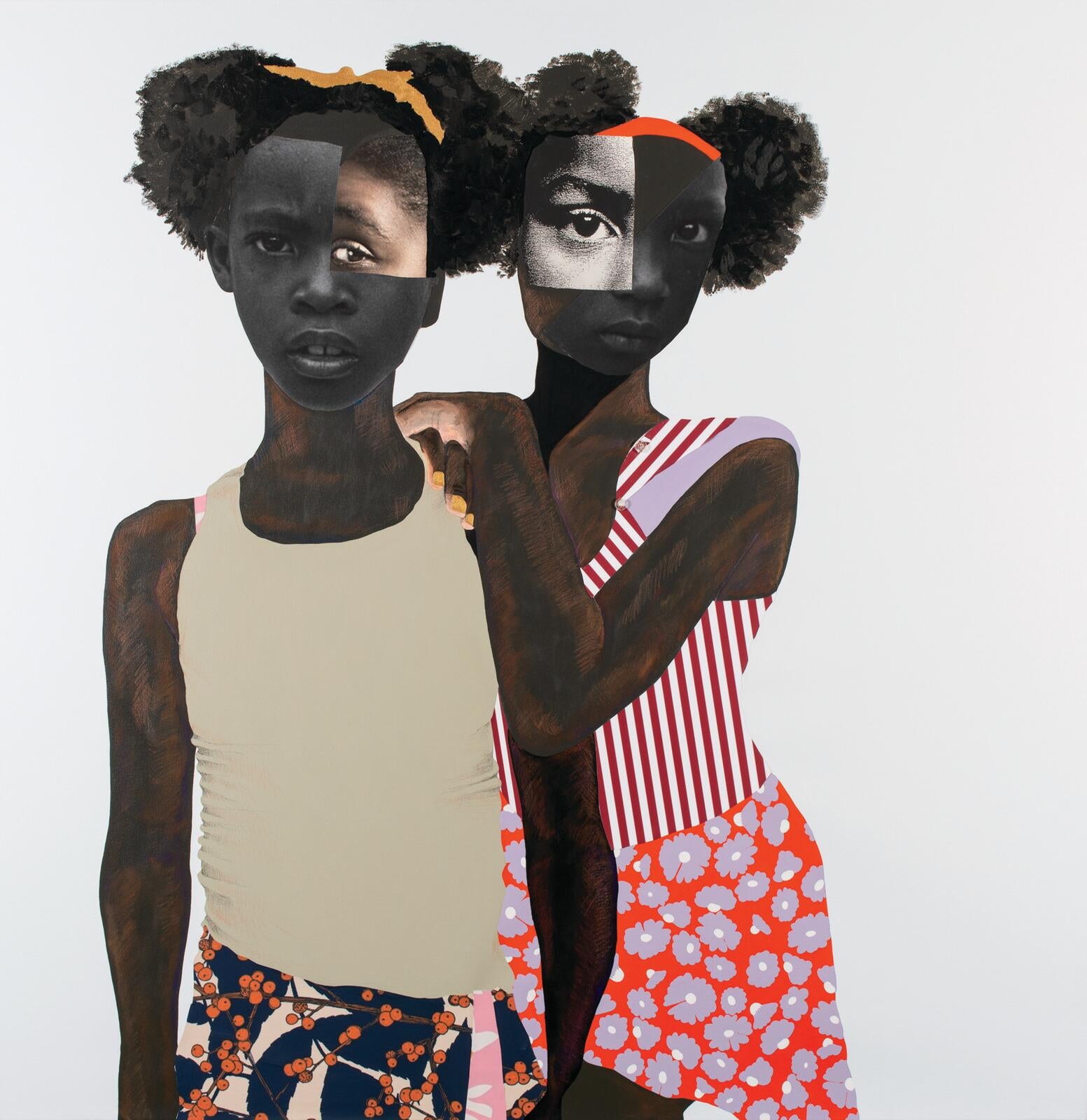
“I consider the women at my church beautiful—especially the elder stateswomen, who used to wear all white and those little white caps,” Roberts recalls. “They would order the service, they would lead in song, and they would get up and start prayer. To me, that was very beautiful. I love the idea of them having the responsibility and meeting that responsibility.”
Growing up in Texas, Roberts began questioning her own beauty at age 8—the same age as many of the subjects featured in her art. “I’m one of four girls—I’m number three—and I wanted to be different from my sisters,” she recalls. “I was redefining myself, separate from my family, wanting to be included but be recognized as different. My mom would dress us all in the same dress, same brand, but the colors were different. I always got red or purple. I started experiencing my own self and my own beauty. I was the first one to get glasses, so my mom let me pick them out—funky blue cat-eyed glasses that are now in vogue, but back then were considered ugly. But they were cute to me. I was already a fashion statement in the third grade.”
Roberts’s mother was religious; and when her daughters misbehaved, the punishment was to read the family’s treasured, oversize King James version of the Bible, the one with the Victorian text. Roberts discovered divine inspiration in the punishment, becoming enthralled with the Renaissance renderings of Michelangelo’s paintings from the Sistine Chapel and with the works of Leonardo da Vinci.
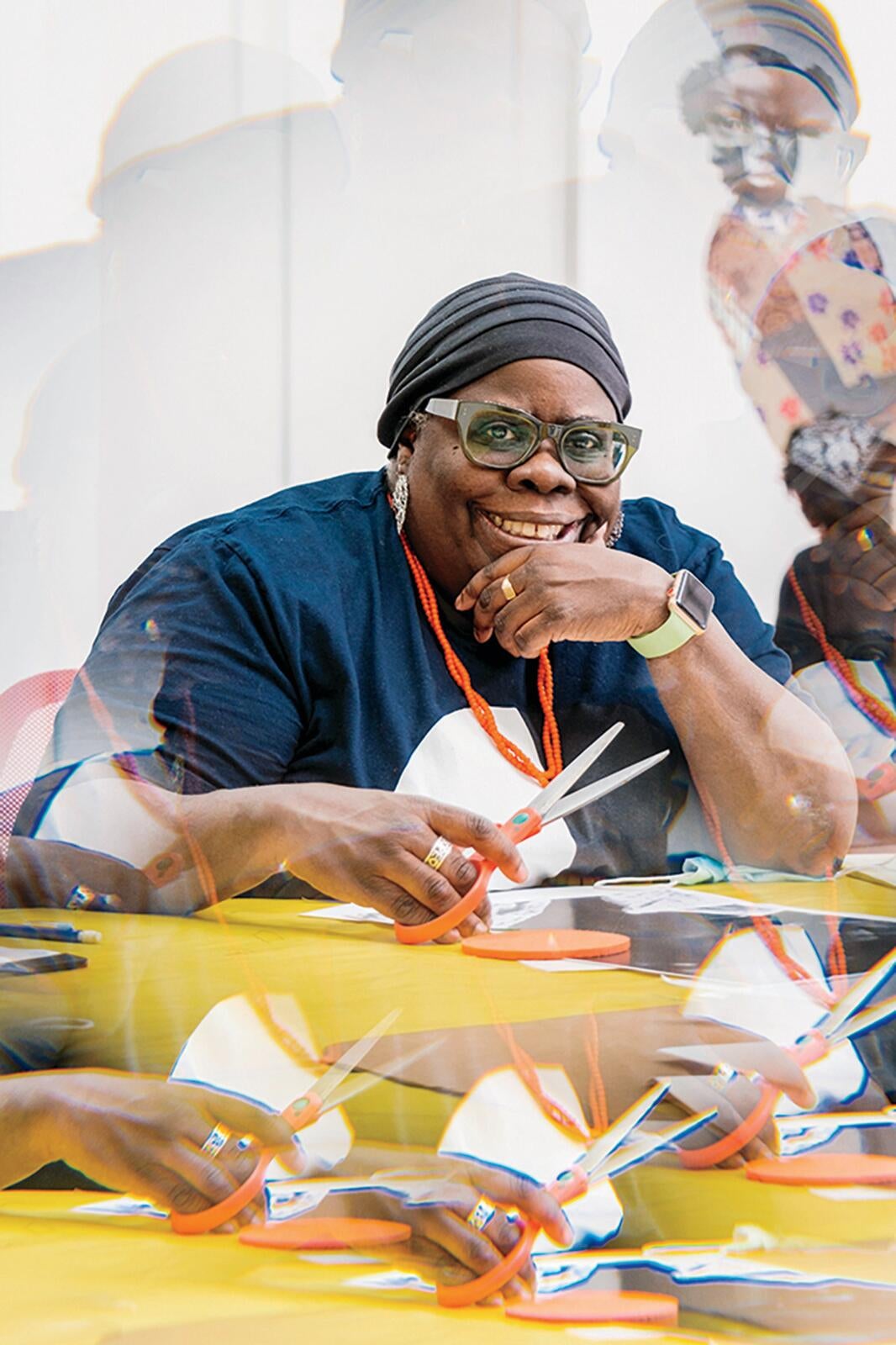
“I was drawn to the paintings, and I started drawing,” says Roberts, confessing that she didn’t actually read the Bible, not only because of its complicated language, but also because she was mesmerized by the artwork. “That’s why I started drawing hands—hands are so very important to me,” she says. “And even in my practice today, I draw beautifully rendered hands and faces. It was so special. But we weren’t allowed to read that Bible on our own. I had to be in trouble to get into those pages, and so I guess I stayed in trouble.”
Ironically, the artist’s exuberant and thoughtful artwork is created with the intention to protect children who are exposed to the troubles of this world. “In Black art, there weren’t a lot of people talking about this,” she explains. “We talk about being a Black woman, our hair, our body, our sexuality, and the way people see us, but nobody was doing the work of looking into childhood. And we had to put on those gloves, to fight for our beauty and fight for our identity. We now have to defend our beauty and the way we dress. So I wanted to show the vulnerability of young children, especially boys, when that toxic masculinity appears, as early as the third grade. Most of the definitions that apply to Black boys and Black girls are very negative and not uplifting. And that’s why most of my images are floating. I’m lifting them up. I’m not grounding them—they’re moving. And that’s what I’m hoping that my art does.”
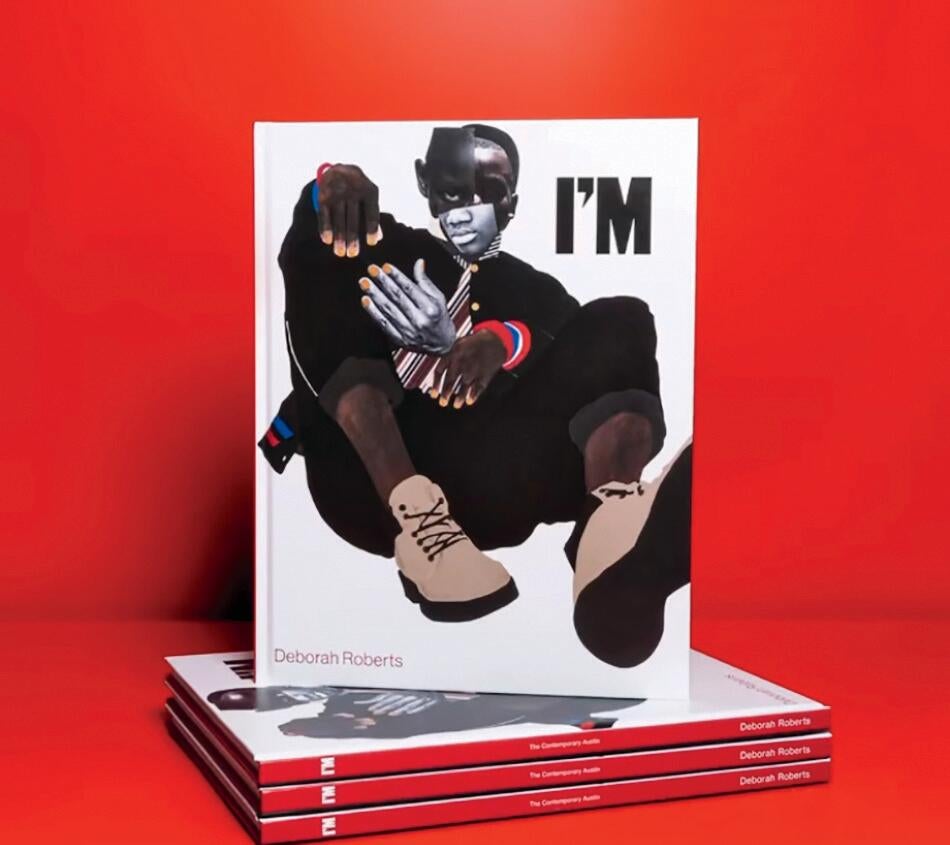
Her latest work—on view from June 9–July 23 at the Stephen Friedman Gallery in London—is a new direction for Roberts, using black backgrounds instead of white. “What I want from the Black paintings is that you really have to work hard to see them…to see our humanity,” she explains. “And that’s the exercise of the work. You have to work to see this person. And when you recognize that, then you are there—you see them. You can’t unsee them. And so that’s what I want—that reflection. It’s like shining a light on something, and once you see it, you can’t unsee it.”
Emil Wilbekin (@EmilWilbekin) is a New York based writer and founder of Native Son. Special thanks to Dorcia Kelley (@kellemiles) of Kelle Miles Designs for contributing to this article.
This article originally appeared in the May/June 2022 issue of ESSENCE magazine, available on newsstands now.


